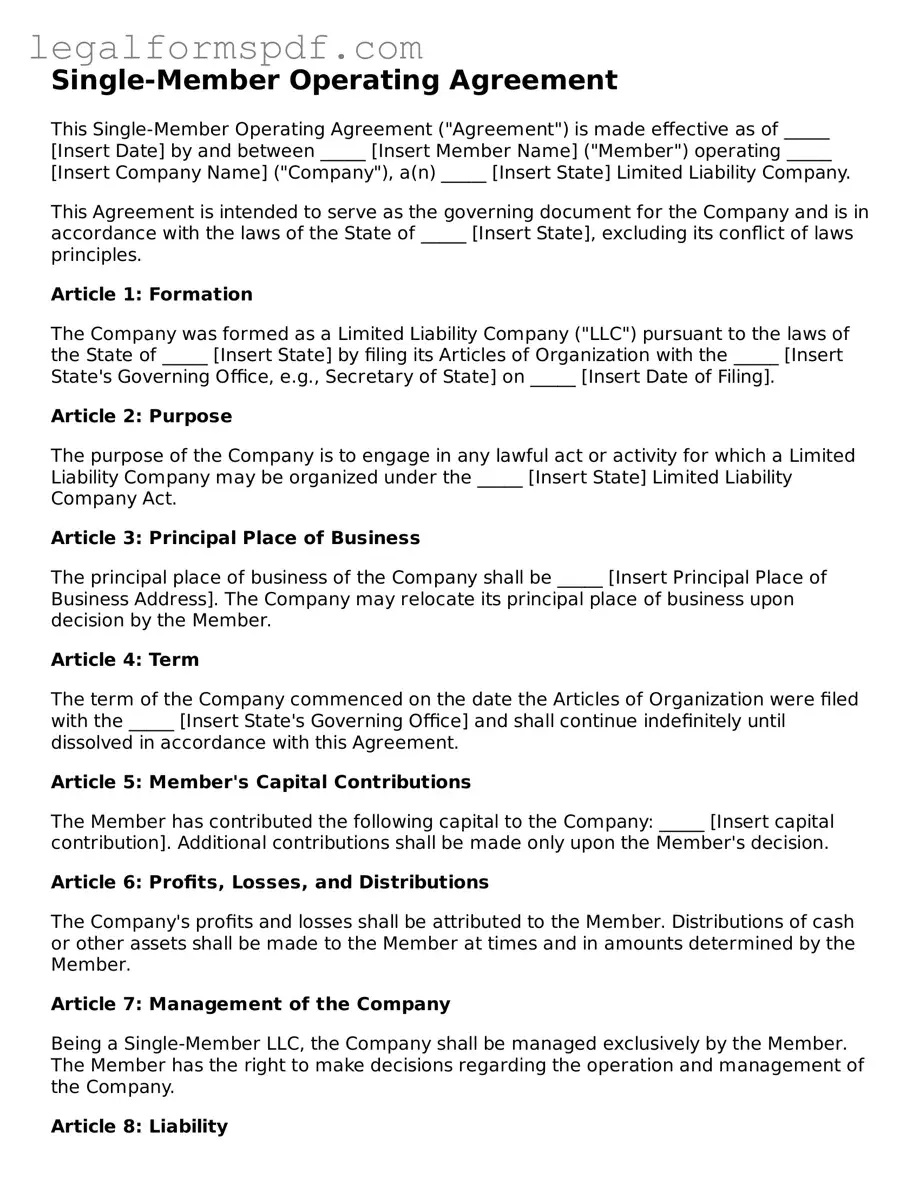The Single-Member Operating Agreement shares similarities with a Sole Proprietorship Declaration, as both documents establish the structure and operations of a business owned by one person. They clarify the ownership, delineate operational procedures, and set forth guidelines for financial management. While the operating agreement is tailored for a single-member LLC, the declaration serves a sole proprietorship but both aim to formalize the business's operations and protect the owner's personal assets from business liabilities.
A Partnership Agreement is another document that mirrors the Single-Member Operating Agreement, albeit designed for businesses with two or more owners. It outlines the responsibilities, profit-sharing, and operational rules among partners. Despite the difference in the number of stakeholders, both agreements serve as foundational documents that guide the business's internal management, decision-making processes, and conflict resolution procedures.
Similar to a Single-Member Operating Agreement, a Shareholder Agreement for a corporation structures the relationship between the shareholders and manages how the business is run. Although it pertains to a corporation with potentially many shareholders compared to a single-member LLC, both documents specify operational controls, outline financial arrangements, and detail the mechanisms for dispute resolution among the invested parties.
An Employment Contract, while primarily focused on the terms between an employer and an employee, shares common ground with a Single-Member Operating Agreement by emphasizing roles and responsibilities. Both documents delineate obligations, performance expectations, and remuneration details. However, an employment contract is between an employer and an employee, whereas the operating agreement establishes the owner's relationship with their business.
The Bylaws of a Corporation, much like a Single-Member Operating Agreement, set forth the rules and guidelines for the company's internal operations. Bylaws focus on the structure of the corporation, officer roles, and board of directors' responsibilities, parallel to how an operating agreement organizes the LLC's operational and financial decision-making processes. Both are essential for clarity and efficiency within their respective business frameworks.
A Business Plan, although not a legal document, shares a kind of kinship with the Single-Member Operating Agreement because it lays out the strategic direction and goals of the business. Both documents are used to steer the business towards its objectives, with the operating agreement focusing more on the legal structure and daily operations, and the business plan emphasizing long-term goals, marketing strategies, and financial projections.
Non-Disclosure Agreements (NDAs) protect sensitive information, a concern also addressed in Single-Member Operating Agreements when outlining the confidentiality of business operations. While an NDA is specifically designed to safeguard proprietary information between parties, the operating agreement might include clauses that keep business practices, client lists, and other private data confidential within the framework of running the single-member LLC.
Commercial Lease Agreements, detailing the terms under which a business rents a commercial space, share structural similarities with Single-Member Operating Agreements in terms of outlining terms and conditions specific to a business's operation. Both agreements cover details such as payment schedules, responsibilities of each party, and conditions under which the agreement may be altered or terminated, providing a framework for the business’s physical location and its operational governance.
The Independent Contractor Agreement, though focusing on the relationship between a business and a freelance service provider, aligns with a Single-Member Operating Agreement in defining roles, responsibilities, and compensation. Both documents clarify the nature of the relationship, set expectations, and define the scope of work, ensuring that both the individual's and the business’s interests are protected and clearly understood.
Lastly, the Terms of Service Agreement, commonly found on websites and apps, indirectly resembles a Single-Member Operating Agreement by establishing the rules and guidelines users must follow. While targeting the end user rather than the business owner, both documents create a framework of operation that must be adhered to for the successful management and operation of the service, outlining procedures, rights, and responsibilities.
